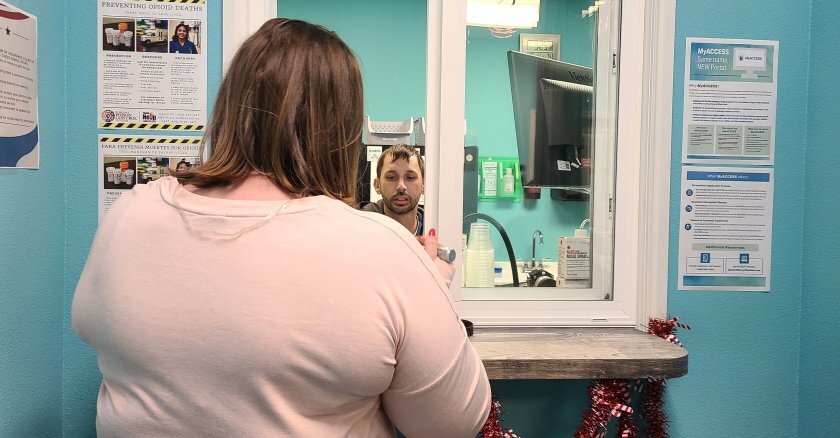For local governments, the front lines are all too familiar. Mayors, county commissioners, school superintendents and public health leaders are dealing with the consequences of addiction every day. Overdoses in school bathrooms. Rising demands on emergency services. Families living through heartache with no road map for support. One in four children in the United States lives in a home where a parent is struggling with a substance use disorder.
For too long, we’ve focused on crisis management, on intervening after the damage is already done. Too often, prevention still gets left out of the conversation. But it shouldn’t be.
It’s certainly heartening that for the first time in years we’re seeing a meaningful decline in drug overdose deaths. According to the latest Centers for Disease Control and Prevention data, overdose deaths across the country dropped by nearly 27 percent last year. Lives were saved and families were spared unimaginable loss.
But this is not the time to pull back. It is the time to lean in. Because while the numbers are down, more than 80,000 people still died from drug overdoses in 2024. That is 80,000 sons, daughters, parents, friends, neighbors and loved ones. And if we let this moment lull us into complacency, we risk seeing those numbers climb once again.
We have an opportunity to change course. To meet people earlier in their journey. To prevent pain from turning into dependency.
Most opioid use disorders begin in the most ordinary way. A routine surgery. A sports injury. Chronic back pain. The list goes on.
Hospitals are one of the last points of contact before a medical problem becomes a behavioral crisis. And yet, most aren’t equipped to provide preventive care that extends beyond the procedure itself. There’s no conversation about the risks, no education on what to expect and no plan for how to taper off.
When we miss that crucial moment, the burden comes back to the community. We see it in emergency calls, in housing instability, in courtrooms and in crisis centers. The earlier we act, the more we ease the pressure later on.
This work is deeply personal for me. In 2016, I lost my son, Christopher, to opioid misuse that all started with a prescription for pain management post-surgery. We followed every instruction to the tee, but we were not given what we needed to protect him from long-term risk.
In honor of Christopher’s legacy, our organization created the role of life care specialist (LCS) to fill the same gaps that failed him. I knew firsthand that hospitals needed more than medical staff. They needed someone trained to walk patients through difficult conversations, provide alternative pain strategies and recognize behavioral health risks before discharge. That’s why we created the life care specialist: to be a trusted guide and to strengthen the health-care team with a dedicated role focused on education and prevention.
We’ve already seen the results. In our first pilot at Grady Memorial Hospital in Atlanta, patients who received support from an LCS were discharged with 25 percent less opioid medication than those who did not, and 99 percent of patients reported better pain control. The LCS role is now active in eight hospitals across the country, was the subject of a Harvard Business School case study, and is being scaled with opioid settlement funding in rural communities throughout Georgia and Arkansas.
The LCS role isn’t rigid. It’s designed to be flexible and tailored to each medical center individually. We work closely with hospital leadership, social service providers and community partners to adapt the model based on local need. It’s a collaborative framework, not a one-size-fits-all solution. And it works, even in areas with limited resources, like access to behavioral health professionals.
The LCS also often becomes the primary point of connection for services that go beyond health care. In 2024 alone, one LCS at a small hospital in north Georgia helped connect more than 170 patients to resources like homeless shelters, addiction treatment centers, domestic violence shelters and mental health inpatient services.
The LCS approach is just one aspect of a strategy of prevention. Public officials don’t need to wait for a national policy or state mandate. Local action starts with a few key steps:
- Talk to your hospitals about how they address pain care and opioid risk.
- Allocate opioid settlement funds to create or support prevention-focused roles.
- Create coalitions that link health care, housing, education and justice.
- Track local outcomes to inform your policy decisions and build public trust.
The goal is not about perfection. It’s about connection and making prevention part of everyday governance. The officials who act now and take prevention seriously won’t just save lives; they’ll also protect the fabric of their communities.
Cammie Wolf Rice is the founder and CEO of the CWC Alliance, which focuses on prevention strategies for ending the opioid epidemic.
Governing’s opinion columns reflect the views of their authors and not necessarily those of Governing’s editors or management.
Related Articles













